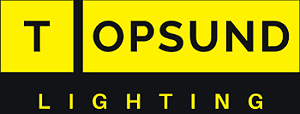Smart home users often struggle with devices that refuse to connect across brands. This creates confusion, wasted time, and frustration during every project.
Matter is a universal communication standard that lets smart devices speak the same common language across Apple, Google, Alexa, and more. It improves compatibility without replacing existing systems.
I have worked with many integrators who used three or four apps just to control basic lighting. Matter finally brings clarity to the chaos and helps everyone build a more stable smart home plan.
What problem does Matter actually solve in the smart home?
Many people get stuck when different brands cannot connect or require multiple apps, hubs, and pairing methods.
Matter solves smart home fragmentation by giving all devices a shared communication standard so they can work reliably across major ecosystems.
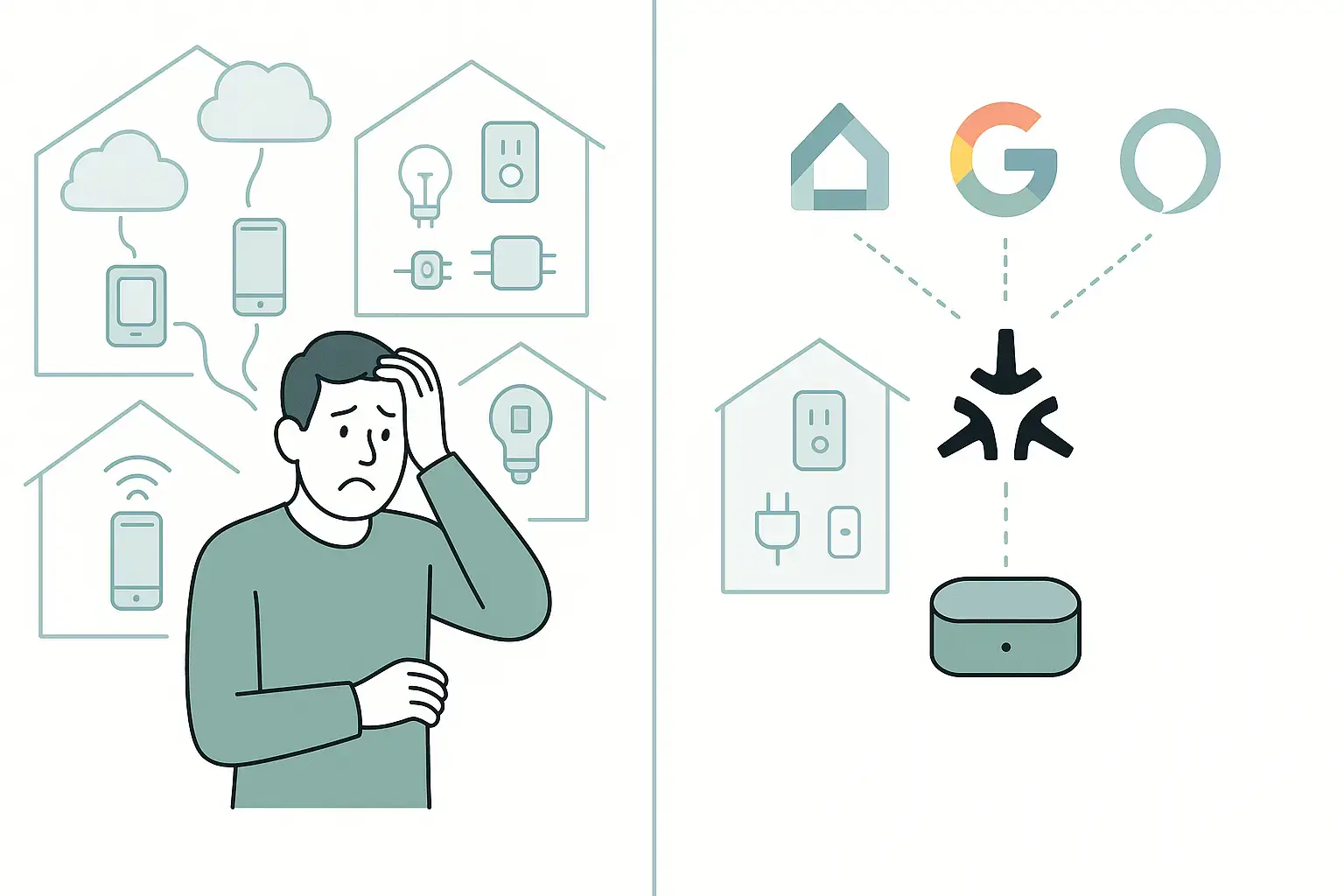
The biggest frustration in smart homes comes from lack of compatibility. Before Matter, a bulb might support Google Home but not Apple Home. A switch might work with Alexa but fail in SmartThings. Matter addresses this by defining one universal protocol layer. Every Matter-certified device speaks the same language, no matter the manufacturer. I once helped a homeowner reduce four apps into one unified ecosystem simply by choosing Matter-supported lighting and switches.
| Problem | Before Matter | With Matter |
|---|---|---|
| Brand incompatibility | Apps, hubs, and bridges everywhere | Shared standard across ecosystems |
| Setup difficulty | Different pairing rules | Simple QR onboarding |
| Vendor lock-in | Forced into one system | Multi-platform flexibility |
| Reliability | Cloud dependency + lag | Local control + unified protocol |
How does Matter work at a high level?
Many users misunderstand Matter because they think it’s a new wireless format.
Matter is an application-layer protocol that runs on existing networks like Thread, Wi-Fi, and Ethernet. It uses these networks to deliver cross-platform control.

Matter is not Wi-Fi. It is not Thread. Instead, it uses these networks as its foundation. Matter only defines the language devices use. Thread is ideal for low-power mesh devices such as switches or sensors. Wi-Fi handles high-bandwidth devices like smart speakers or cameras.
In many modern homes, the border router becomes the heart of a Matter system. Devices like HomePod mini, Google Nest speakers, and some Amazon Echo models already include Thread radios. I often explain to clients that a Matter smart switch on Thread can control a Matter lamp on Wi-Fi instantly because they use the same application-layer protocol.
| Layer | Description | Examples |
|---|---|---|
| Application | Matter “common language” | Commands, status updates |
| Network | IP communication | Thread, Wi-Fi, Ethernet |
| Hardware | Radios and chips | Silicon Labs, Nordic, Tuya |
What is Matter not? Common myths and misunderstandings?
The industry sometimes treats Matter like a magic upgrade or new automation system, which leads to false expectations.
Matter is not a hub replacement, not an automation system, and not a new wireless technology. It is only a universal connection standard.
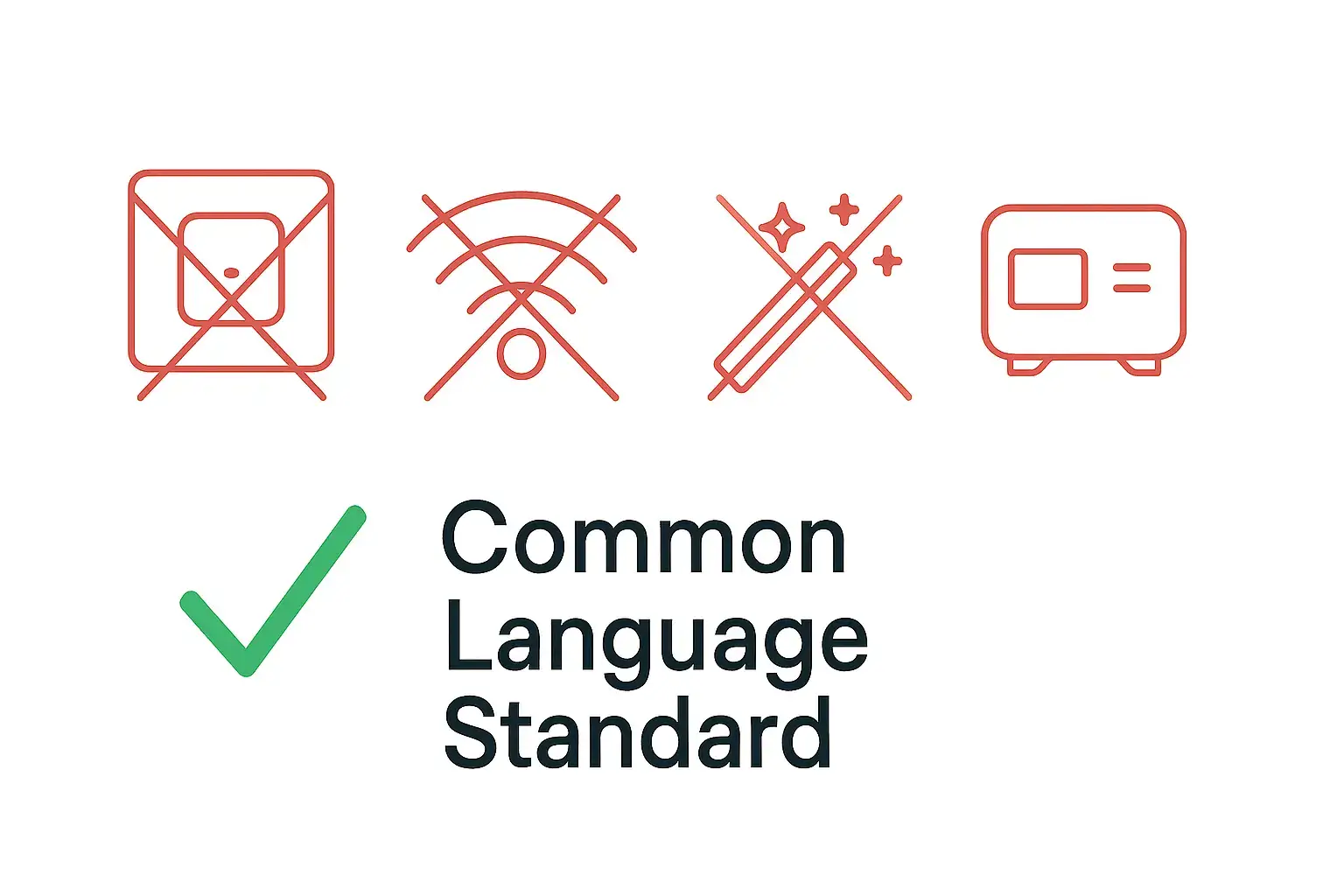
Matter does not replace Apple Home, Google Home, Alexa, SmartThings, KNX, or other systems. It does not create automation rules. It does not replace Wi-Fi or Thread. It simply gives devices a shared language so all platforms can recognize and control them consistently.
A simple example I often use with clients:
A single Matter smart plug can show up in Apple Home, Google Home, and Alexa at the same time. Each platform can control it independently. Before Matter, this required separate integrations for each ecosystem.
Matter also does not upgrade old devices magically. Hardware limitations matter. A device needs the right chip and the right memory to support Matter.
| Myth | Reality |
|---|---|
| “Matter replaces hubs.” | Hubs still exist. Many act as border routers. |
| “Matter is a new wireless.” | Matter runs on Thread, Wi-Fi, Ethernet. |
| “Matter adds automation.” | Automation stays in each ecosystem. |
| “Matter upgrades all devices.” | Only compatible hardware can upgrade. |
Which brands and ecosystems already support Matter?
Smart home buyers want to know if their favorite platforms already support Matter.
Matter is supported by Apple, Google, Amazon, Samsung, Philips Hue, Aqara, Eve, Nanoleaf, and many major lighting brands.
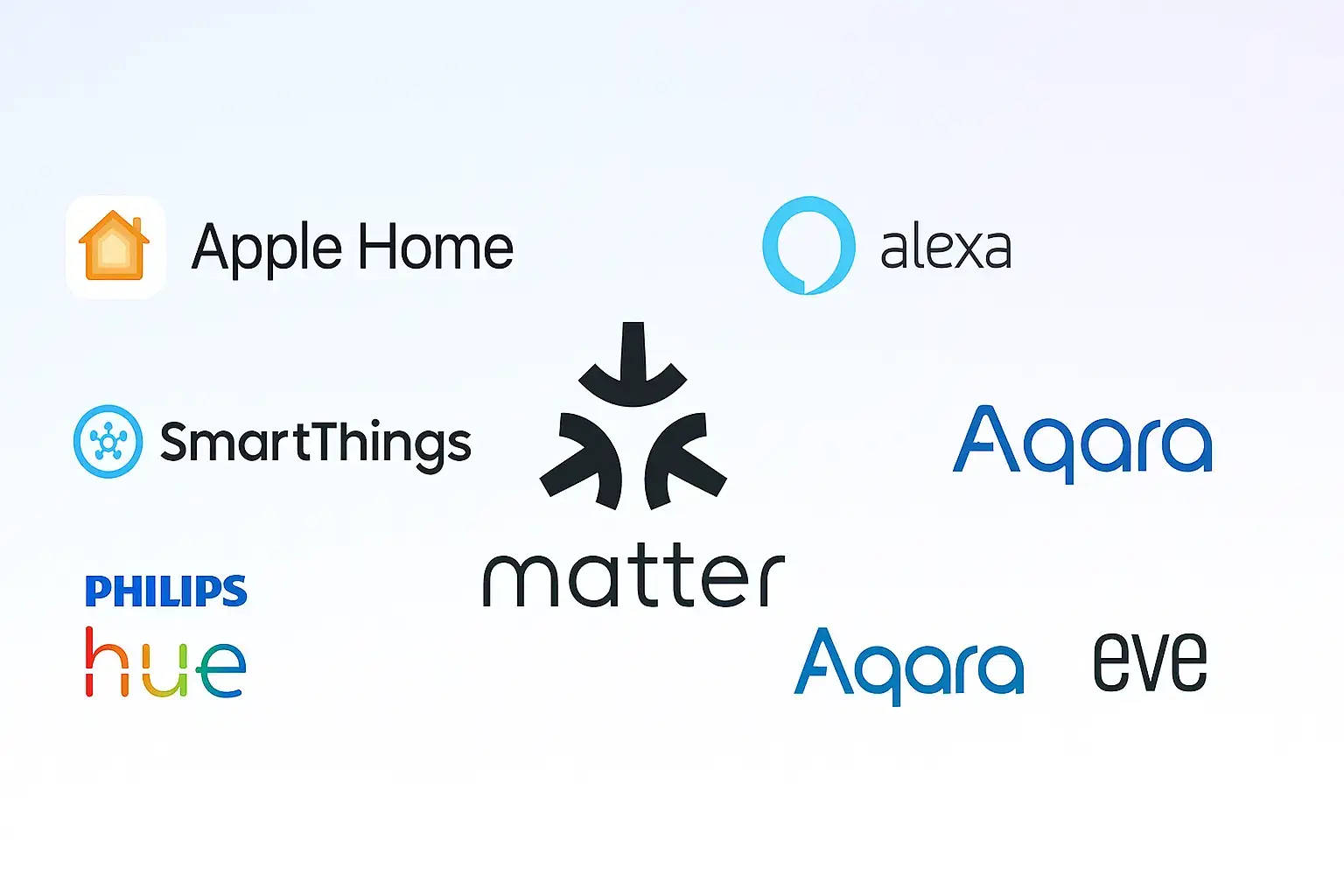
Matter receives support from the Connectivity Standards Alliance (CSA), which includes more than 500 companies. Apple Home, Google Home, Alexa, and SmartThings have added strong support. Many brands—Philips Hue, Aqara, Nanoleaf, Eve—now sell Matter-capable devices or updated bridges.
In my projects, Matter has become a common request from homeowners who want future-proof systems. Lighting brands also begin offering Matter drivers that work with Thread or Wi-Fi.
| Brand | Support Level | Notes |
|---|---|---|
| Apple Home | Full Matter support | Thread-ready with HomePod mini |
| Google Home | Full support | Nest devices act as border routers |
| Amazon Alexa | Broad support | Echo models include Thread |
| SmartThings | High support | Strong multi-brand integration |
| Philips Hue | Via Matter Bridge | Requires latest Hue Bridge |
| Aqara | Bridge + new devices | Strong roadmap for sensors / switches |
Do you need new hardware to start using Matter?
Many users hope Matter is just a software upgrade.
You need at least one Matter border router and Matter-capable devices. Some older devices can update through firmware, but many require new hardware.
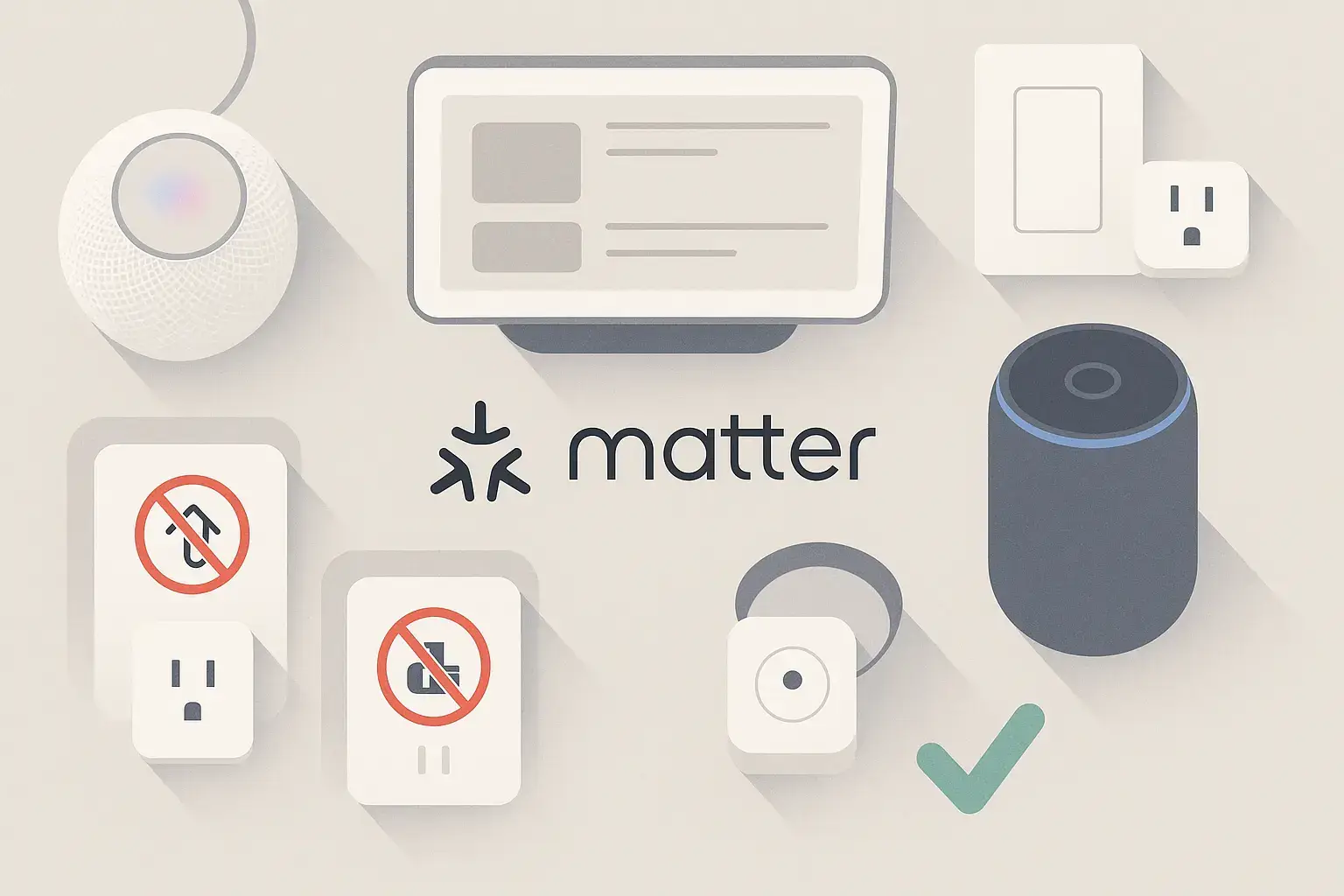
To run Matter, a home needs a border router. The good news is that many people already own one without knowing it. Apple TV 4K, HomePod mini, Google Nest Hub, and some Echo models are all border routers. They link Wi-Fi and Thread devices into one network.
However, device compatibility depends on hardware. Thread-based devices require new chips. Wi-Fi devices may receive firmware updates if the manufacturer supports it. Matched lighting systems also need Matter-capable LED drivers, which many brands begin offering. When I help clients upgrade older systems, I always check chipsets first because software alone cannot solve hardware limitations.
| Device Type | Upgrade Potential | Notes |
|---|---|---|
| Wi-Fi smart plugs | Sometimes upgradable | Depends on flash memory & manufacturer |
| Thread switches | Usually new hardware required | Needs dedicated Thread chip |
| Smart hubs | New versions include Thread | Many act as border routers |
| Lighting drivers | Must support Matter protocol | Not all suppliers offer them yet |
FAQ: Common Questions About Matter
Does Matter replace Zigbee?
No. Matter does not replace Zigbee. Many devices will continue using Zigbee for local mesh networking. Matter only standardizes cross-platform control.
Is Matter the same as Thread?
No. Thread is a low-power mesh network. Matter is the “language” spoken over networks like Thread and Wi-Fi.
Does Matter require Wi-Fi?
Not always. Thread devices do not use Wi-Fi directly, but a border router still connects Thread to the main IP network.
Can existing devices upgrade to Matter?
Only devices with compatible hardware can upgrade. Many older devices cannot update due to memory or chip limits.
Does Matter work offline?
Yes. Matter supports local, offline control. Automation still depends on each ecosystem (Apple/Google/Alexa).
Do professional lighting systems support Matter?
Some brands offer Matter drivers, but DALI, KNX, and DMX remain dominant in commercial and high-end residential projects.
Conclusion
Matter gives the smart home a universal language that improves compatibility and user experience. With the right hardware, lighting and automation become more flexible, stable, and future-proof across all major ecosystems.
